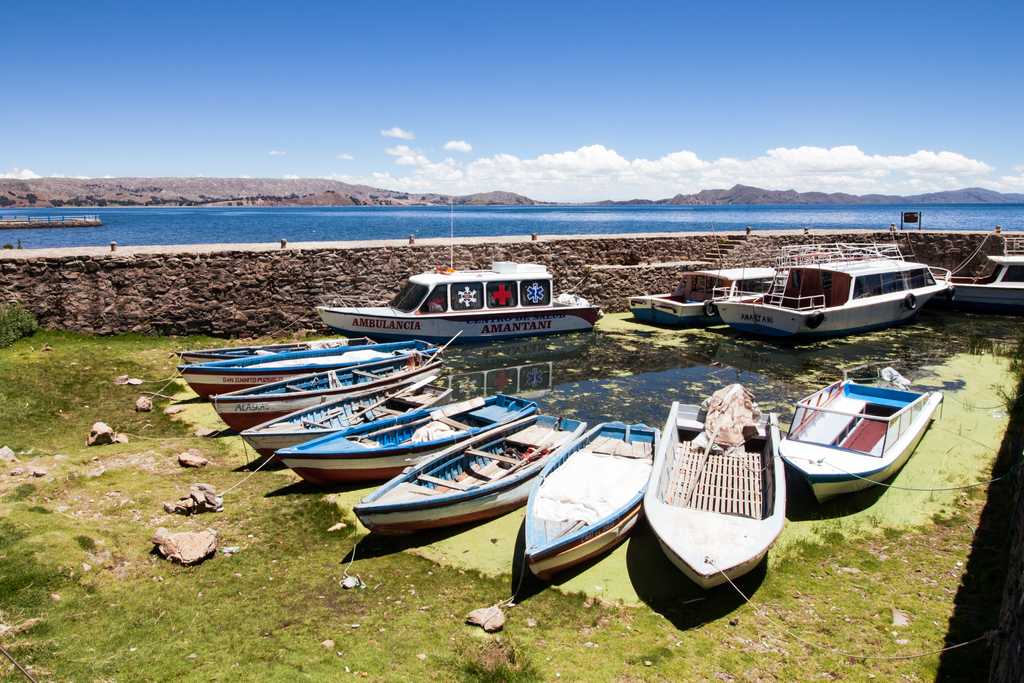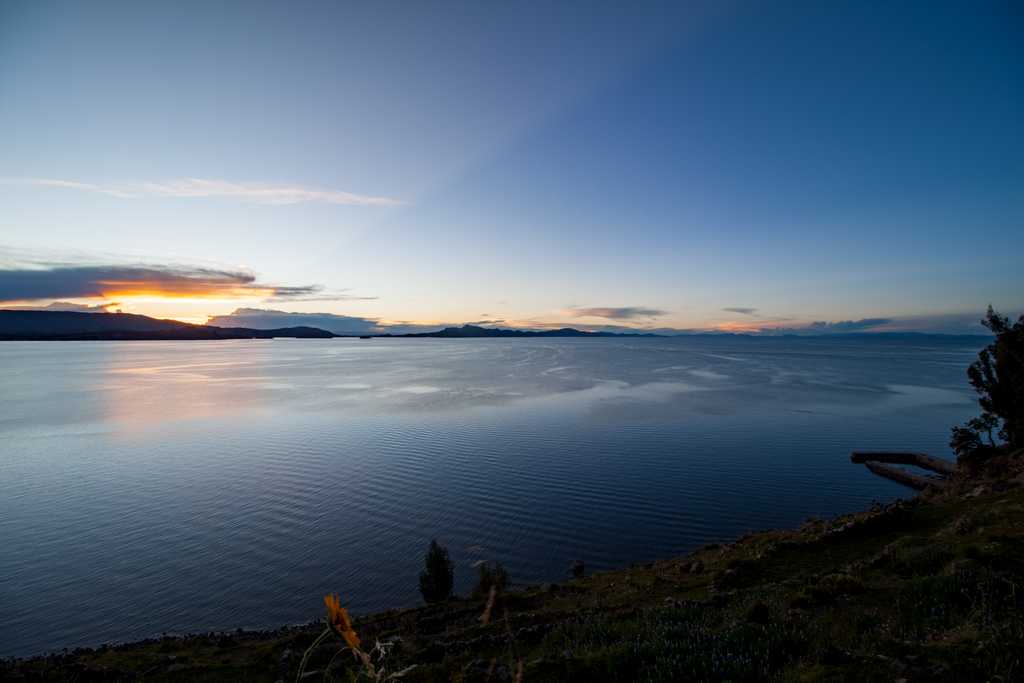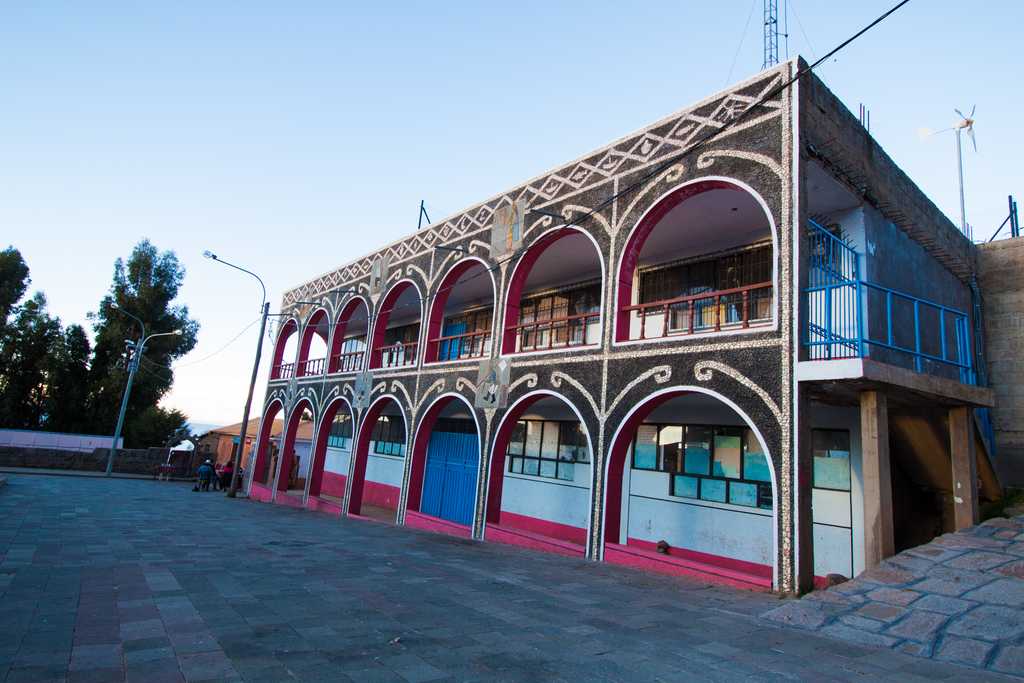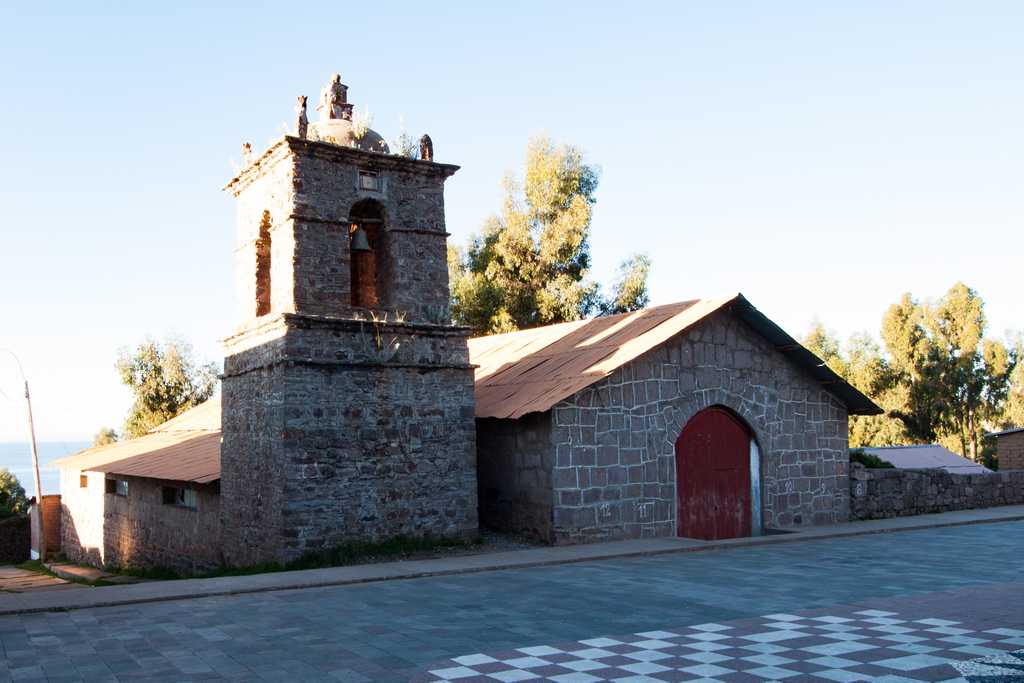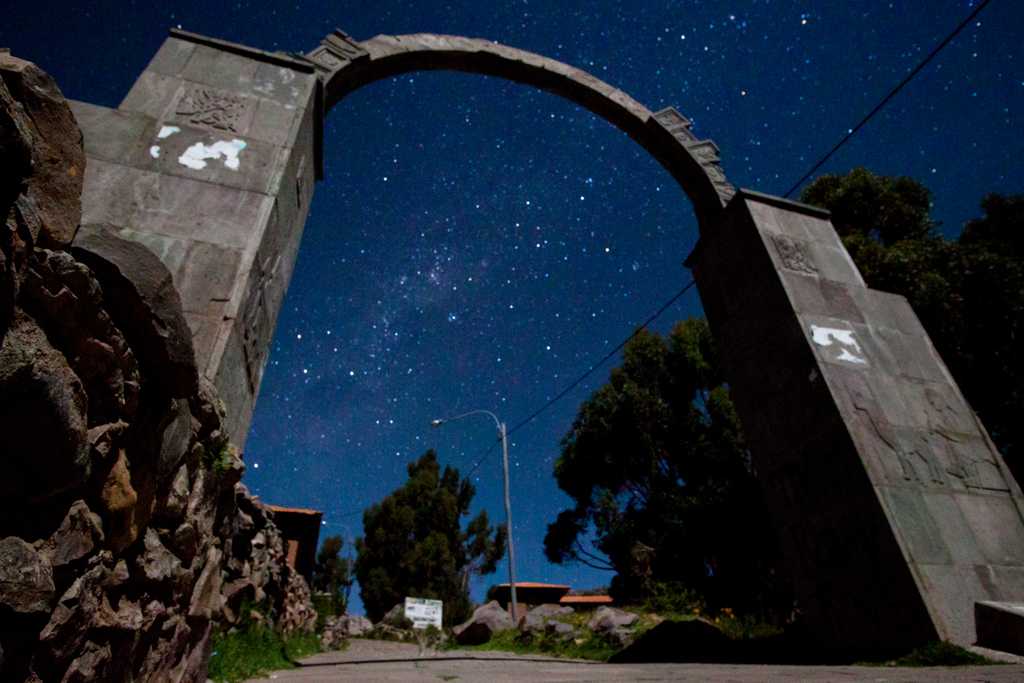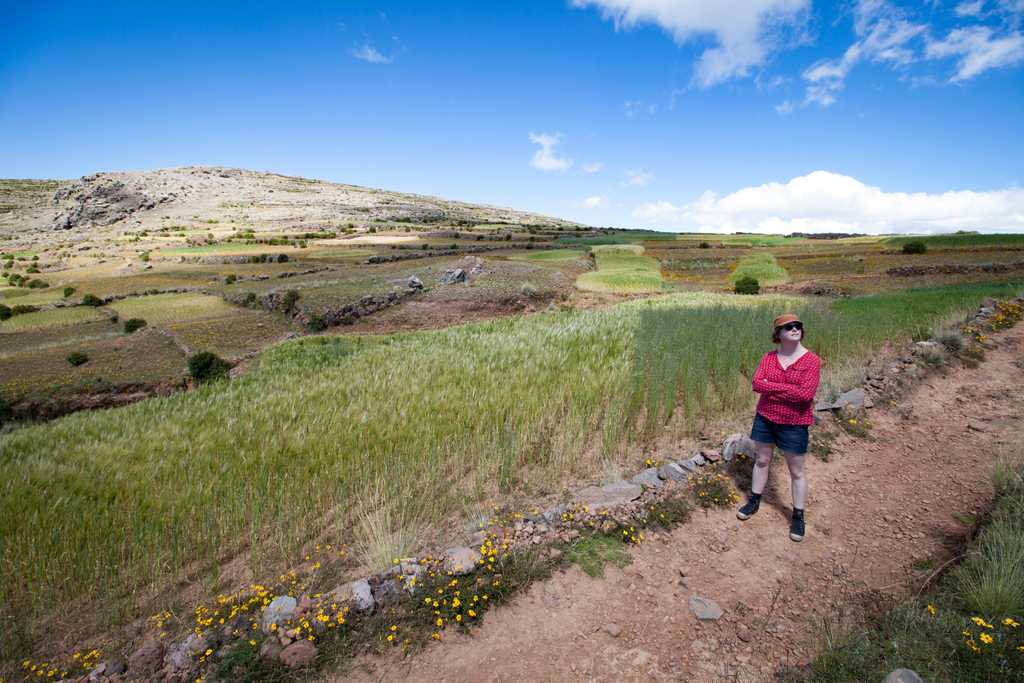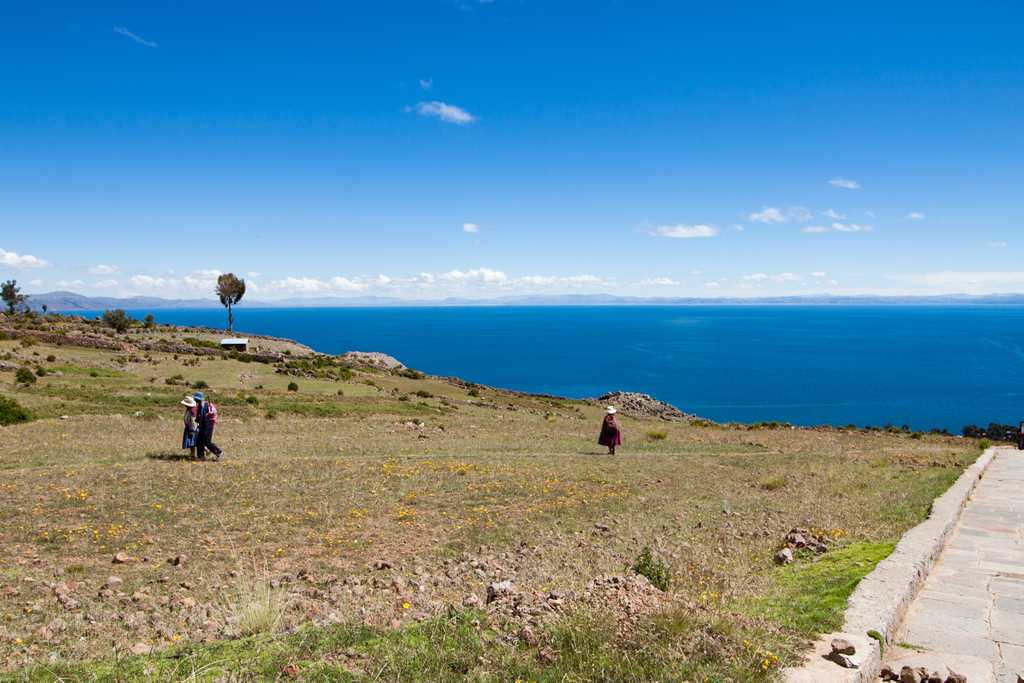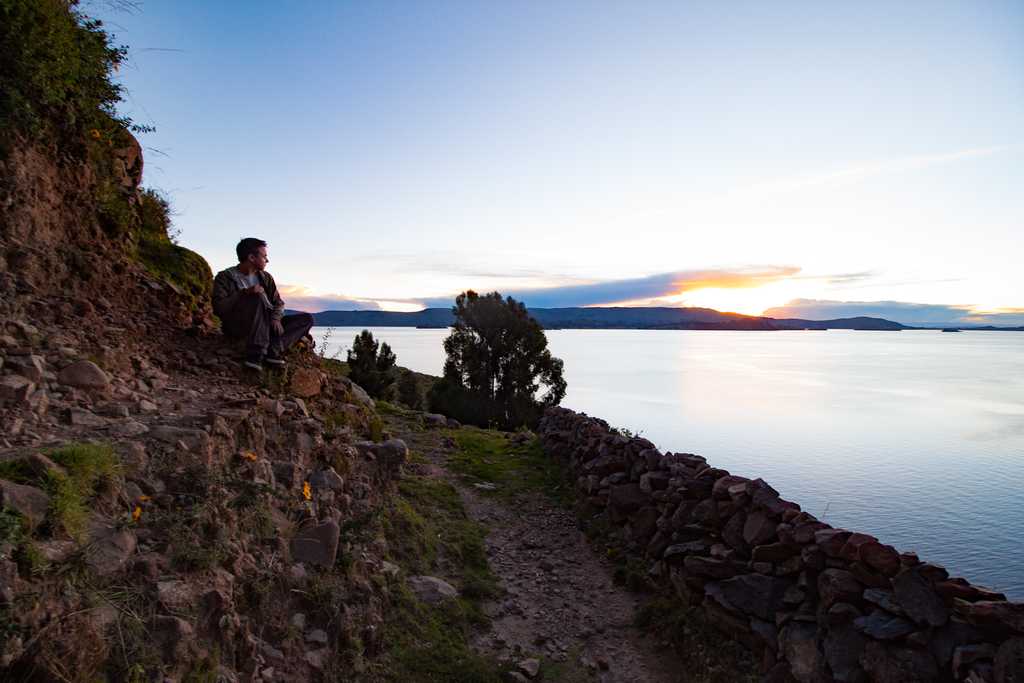We leave Chifrón for Amantani island!
After stocking up on supplies (advice from Footprint), we travelled back down the rocky dirt road to the boat dock at Chifrón. There just happened to be a wooden boat full of people, ready to go.
The water was calm and the scenery spectacular.
Begin off topic rant
I have always gotten a bit sea sick. However, last year I followed a refugee journey for a documentary. I went out to sea on a boat in the middle of the night “seeking refuge” and then, just as the Australian Government does to refugees, I was transferred to an enclosed rescue boat and turned back to shore. The rounded bottom and rough seas meant that I got motion sick. The lack of fresh air, fumes from the engine, cramped and crowded conditions, combined with my diagnosed anxiety disorder, meant that I had the worst panic attack that I can remember. I hyperventilated, yelled at people for trying to help, found a hatch and tried to jump into the open ocean. Held onto the boat by others, I vomited until I was retching nothing up, while still resolute that jumping into rough open sea was the only solution. I was eventually transferred to an open rescue boat for the rest of the journey to shore. Why do I tell this story? Well, since then I’ve had a heightened fear of boats. Not just that I don’t like to feel nauseous, but really avoiding being on boats.
The journey from Chifròn to Amantani was in an open boat with a nice, fresh breeze. The water was calm and the journey smooth. As it’s a lake, huge but still a lake, I could see shore at all times. I think that this boat trip helped me to address the fear. I really found the boat trip enjoyable.
End off topic rant
On arrival to the island, the skipper introduced me to Flavia, a traditionally dressed woman who had come down to the wharf to collect some groceries from the boat. There was a Danish family on the boat too, mum, dad and three blonde kids; they also followed Flavia.
There are no hotels on Amantani. It’s a quiet farming village. Therefore all tourist accommodation is in the form of homestays. Rather than door knock the village, we decided to go with the flow and stay with Flavia and her husband Ivan. As did the Danes.
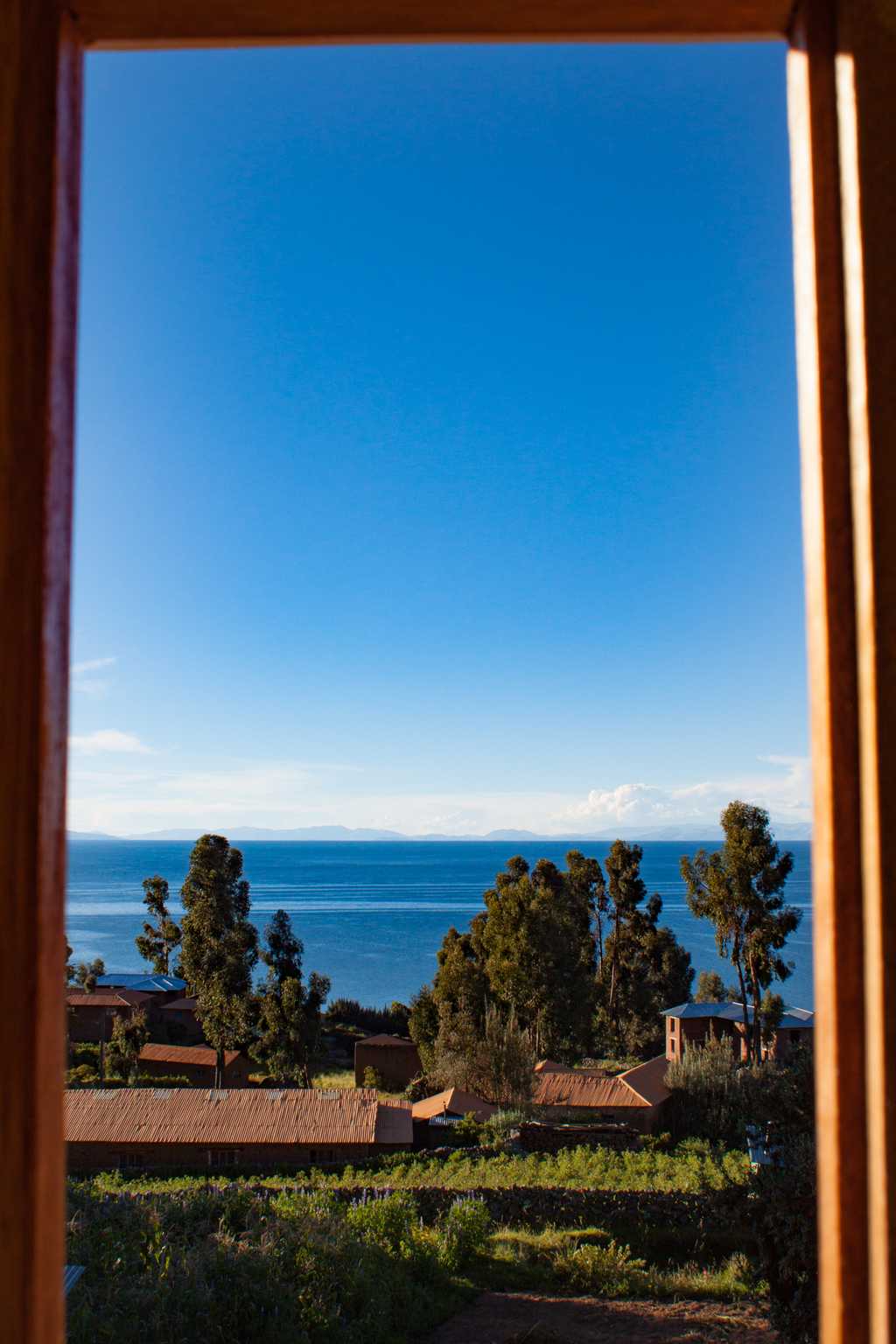
The island of Amantani is steep. We were out of breath from the 500 metre walk from the wharf to the house, near the main square. Our room was lovely, the bed comfortable, and the view spectacular.
Soon after settling in, we walked the 20 metres to the main square and then picked a path out and kept walking. I say path, as there are no cars on the steep island, and the streets are narrow. We walked half the length of Amantani until the sun set, then traced our steps back in the twilight to the main square.
We sat at the only cafe – style establishment and had a beer. The square was a hub of activity, mainly for locals catching up with friends and kids riding bikes on the only flat-ish paved area I saw. There was one French tour group that passed us by, I heard the guide telling them that they had ten minutes free time before they were due back at their homestay for the night- it was about 7pm.
As there are no restaurants on Amantani, meals are usually included in the homestay. I saw a couple of tourists searching for a place to eat before resigning themselves to the custom of the one street vendor barbecuing alpaca kebabs.
We dined with our hosts and the Danish family. Delicious veggie and legume soup followed by omelette on rice. Ivan explained that meat in a rarity considering the small plots of land each family has and the cost to bring bought meat in via boat.
The following day, after a delicious pancake breakfast, we walked up to the highest point on the island, called Pachamama (mother earth). Surprisingly, the entire path is paved and signposted. It’s like a giant ramp up to the top. I was wondering why not steps since it’s such a steep incline, then I saw a farmer pushing a wheelbarrow up to his plot.
Soon after leaving the town, mud brick buildings give way to stone fenced fields.
Every farmer grows what his or her family needs to survive. This means that each plot is a pretty combination of a few rows of purple flowering peas, a few rows of bright red quinua, some wheat or barley, then some dark green potato plants. The next plot is the same. It’s beautiful to look at, and deeply contrasts the acres and acres of barley for commercial purposes grown back home.
We walked alongside an elderly farmer for a while, who seemed to be struggling with the incline. She needed to stop for a break every few hundred metres, and wheezed and coughed terribly. The perhaps 12 year old son of the Danish couple carried the lady’s rucksack until the turnoff to her farm. Strange seeing a tall blonde boy with a woven rug filled with goods tied to his back like the local ladies, but sweet.
It was a bit of a hard climb, not just because of the slope but also the altitude of the island. Especially for the Danes, since they’d only flown in the day before- this was their acclimatisation spot ahead of a trek in the Sacred Valley.
From the top of Pachamama, I can confirm that Amantani is in fact an island. Fresh water all around, right up until the distant land.
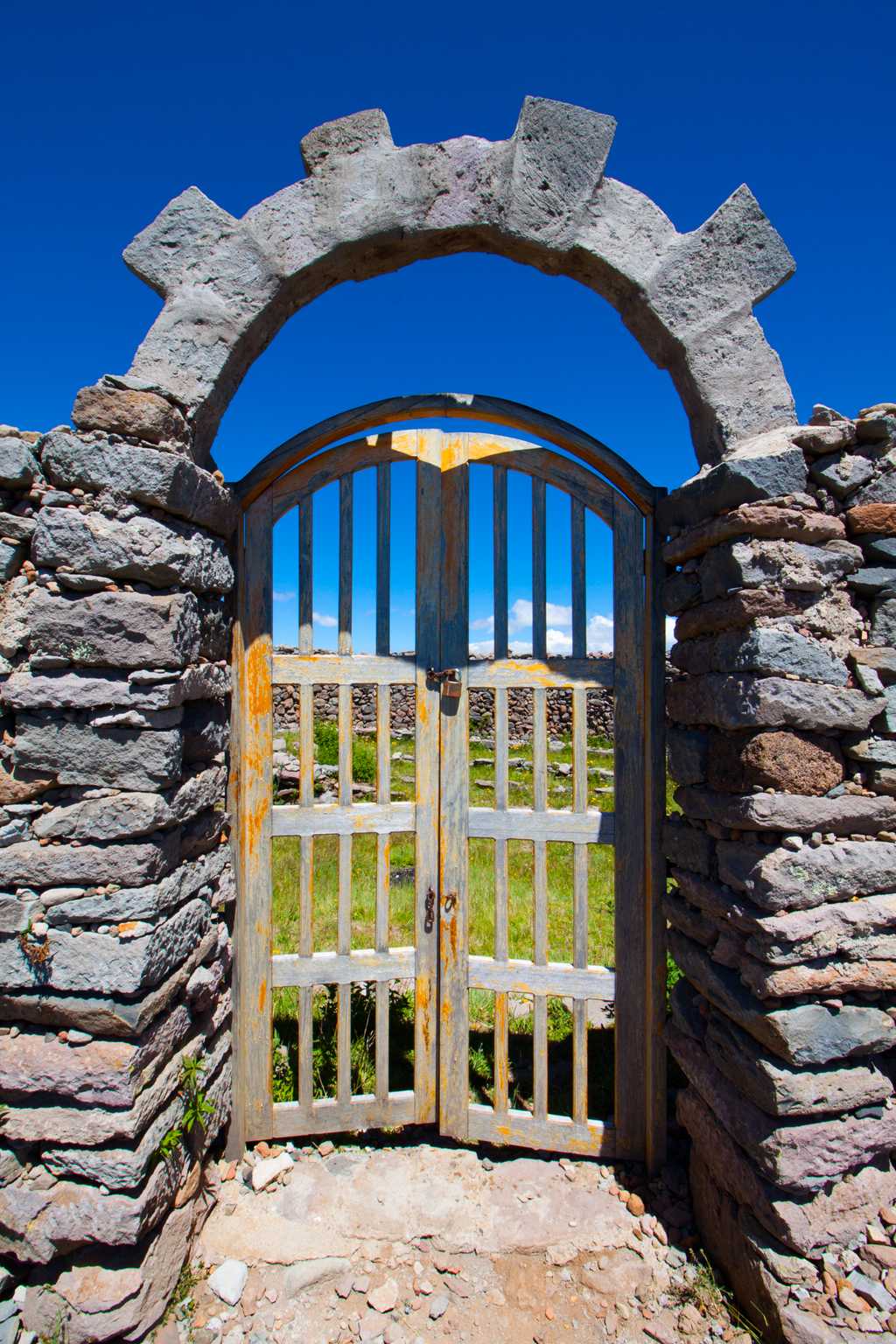
We walked back down, far easier, packed our backpacks and farewelled our hosts. We only had time for one night; most unfortunate.
At the wharf, I asked a local lady with packed bags if she was going to Chifrón, she was. So we sat down and waited until she felt it was time to get on a boat. There were a dozen boats crammed in the small marina, without her help I wouldn’t have known which one to get on. There was no telling which one was about to leave or to where.
This boat back to the mainland was a full cabin with an 80’s modular lounge suit lining both walls. For the most part the ladies sat inside, the men on the roof. I was one of six people who sat in the small open section at the back. I prefer fresh air on boats. I watched the birds diving for fish and swimming out the way of the boat, rather than fly. I watched the occassional bottle float by. The journey is just under an hour. Unfortunately, in spite of wearing a hat, jacket, and sunscreen, I got burnt… on the thumbs, yes really.
Once we reached Chifrón, I was ready. I remembered how quickly the locals took the taxis when we first arrived in Capachica, and I remembered how long the walk is to Capuchica if we missed out. The first taxi was quickly snapped up, about nine people and their bags crammed into the sedan. Then at the same time another taxi and a minivan pulled up to the dock. I erred. I stopped to confirm with the driver his destination, and then loaded our bags on the roof rack. By the time I got into the bus, every single seat was taken by locals from the boat. Did I say bus? No, that gives the illusion of room to stand. This is a courier van retrofitted with chairs. To stand in the middle we had the stand side on, bend our knees and crouch. Our heads were still jammed against the roof.
Although the bus was going to our intended destination of Puno, we hopped off in Capuchica after a little encouragement from our fellow passengers. The next bus only took ten minutes to fill up anyway, and within the hour we were back in Puno.
